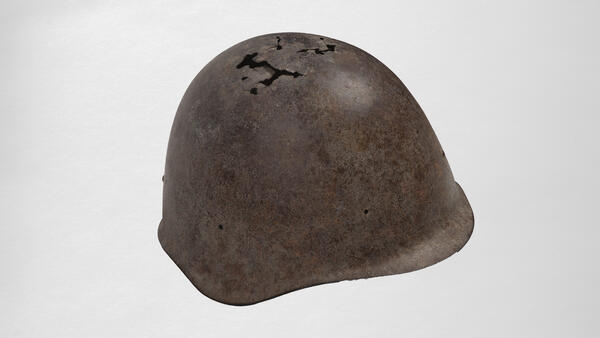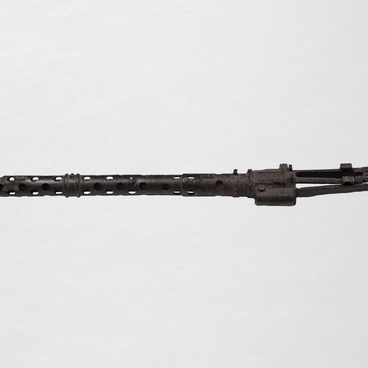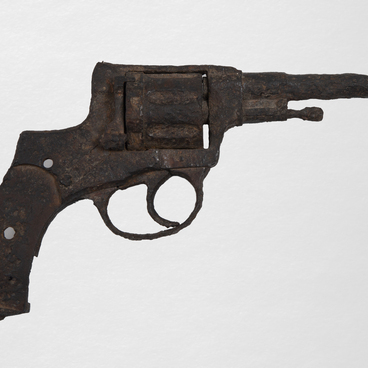The exhibition of the Zimovniki Museum of Local History presents the Soviet SSh-40 helmet — a steel helmet of the 1940 model, which protected the heads of military personnel from bullets and shrapnel. This model was used in the Armed Forces of the USSR during the Great Patriotic War, as well as in the post-war years until more advanced helmets SSh-60 and SSh-68 were developed in the 1960s.
The SSh-40 helmet was made of high hardness armor steel. The material was alloyed — it contained special impurities that increased the coating density, for example, chromium, nickel, copper, and others. Therefore, despite the small thickness — about 1.2 millimeters — the steel sheet stopped bullets and grenade fragments.
The headgear consisted of a strong base and under-crown part — three artificial leather elements, fastened together with a cord. It could be adjusted — tightened or loosened, fixing the helmet to the size of the head.
A dense cotton pad that absorbed shocks was located under the leather elements. In addition, each helmet had a chinstrap. Thanks to it, the helmet did not fall off when the soldier ran or fell.
Engineer Mikhail Koryukov was one of the developers of the SSh-40 helmet. A special commission, headed by an experienced military commander — Marshal Semyon Budyonny, checked the helmet. Koryukov left memories about the helmet test. First, Budyonny hit the sample with a saber made of hardened Zlatoust steel and then started shooting at it with a revolver. His first shot was from a distance of 25 meters, then from 10 meters, and the last bullets were fired almost close to the target, but there were no holes in the steel case.
The SSh-40 helmet was made of high hardness armor steel. The material was alloyed — it contained special impurities that increased the coating density, for example, chromium, nickel, copper, and others. Therefore, despite the small thickness — about 1.2 millimeters — the steel sheet stopped bullets and grenade fragments.
The headgear consisted of a strong base and under-crown part — three artificial leather elements, fastened together with a cord. It could be adjusted — tightened or loosened, fixing the helmet to the size of the head.
A dense cotton pad that absorbed shocks was located under the leather elements. In addition, each helmet had a chinstrap. Thanks to it, the helmet did not fall off when the soldier ran or fell.
Engineer Mikhail Koryukov was one of the developers of the SSh-40 helmet. A special commission, headed by an experienced military commander — Marshal Semyon Budyonny, checked the helmet. Koryukov left memories about the helmet test. First, Budyonny hit the sample with a saber made of hardened Zlatoust steel and then started shooting at it with a revolver. His first shot was from a distance of 25 meters, then from 10 meters, and the last bullets were fired almost close to the target, but there were no holes in the steel case.



